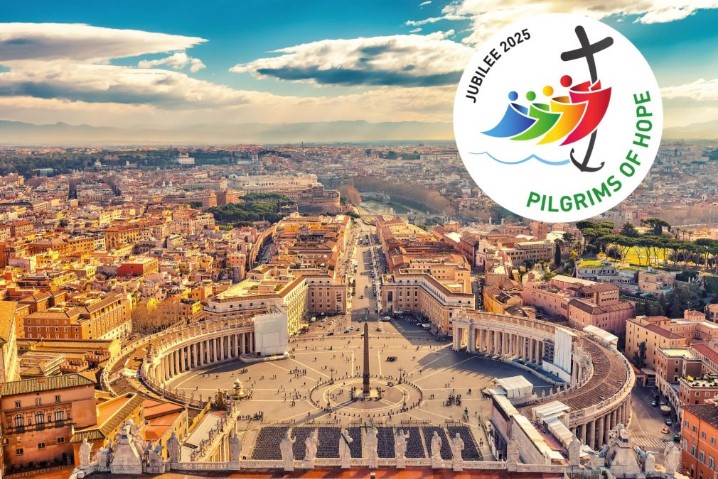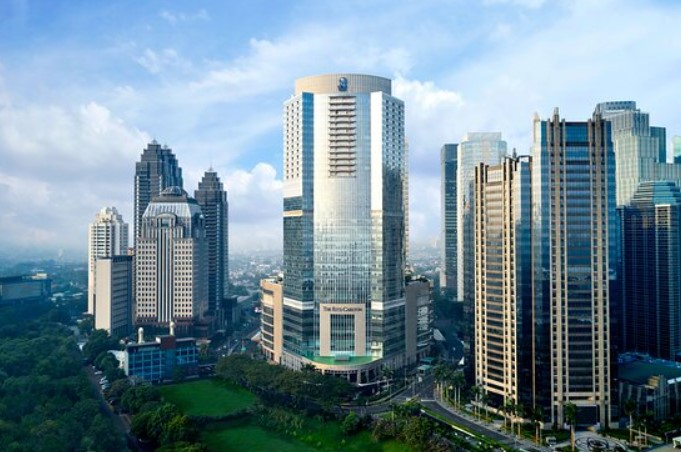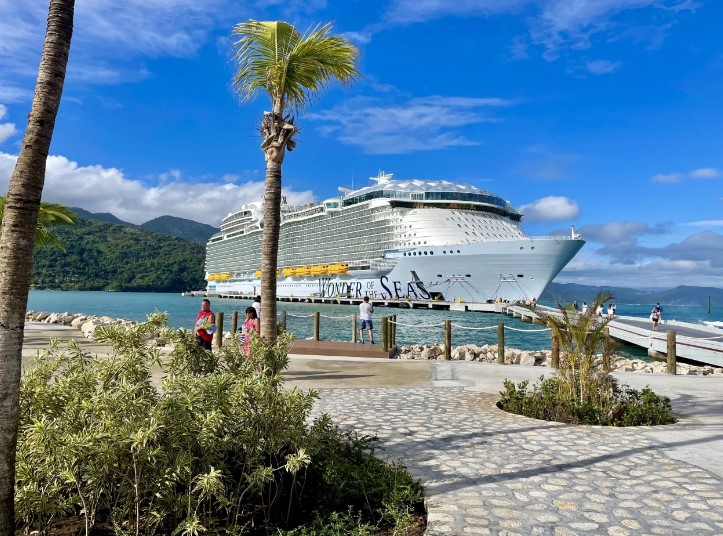Every year, Canadians put Europe on their summer calendars, even though they know it’s going to be expensive, full of tourists and often excruciatingly hot. Pent-up demand since the pandemic is a major culprit, of course, as is renewed confidence in travel in general, both expected to drive sales to better-than-2019 levels this summer.
“When you look at our top destinations for 2023, four of the top 10 are European countries,” says Uná O’Leary, general manager of luxury travel group Virtuoso Canada. These hotspots include the usual suspects: the United Kingdom, Italy, France and Portugal.
Virtuoso’s 2022 travel-trend research, conducted in collaboration with YouGov, found that “Canadians are equally as likely to travel to Europe as they are to travel within their own country,” O’Leary says, adding that these research numbers also predict that “relative to 2019, travellers plan to spend 12 per cent more in 2023.”
“I find that Canadian clients in general – unlike U.S. clients – are more price-conscious, which could be because of the dollar-euro exchange rate,” says Ralph Crawford, a vice president at Tully Luxury Travel. “Many Canadians are struggling with the prices that some of the hotels are charging this summer – double if not triple what they were pre-COVID.”
While all this talk about crowds and costs is a bit of a downer, all is not lost. There are a few lesser-known destinations that are quieter and worth exploring – alternatives to the favourites, that offer an equally compelling and authentic European experience – and fewer tourists.
Instead of the Rhône Valley, France, visit the Douro Valley, Portugal
:format(jpeg)/cloudfront-us-east-1.images.arcpublishing.com/tgam/ST6SXTZFC5G3JBVLMFGKNQ4I3A.JPG)
Douro Valley, located in the northern swath of Portugal, is loaded with history.DANIEL RODRIGUES/Associação de Turismo do Porto e Norte
What’s the buzz?
“With options for exploring by rail, river and road, the Douro Valley offers the tranquillity of its vineyards and warm temperatures throughout the summer and its shoulder months,” says Tim Morgan, CEO of Jerne, a travel marketing company and partner of Forbes Travel Guide. River cruises leave from Porto and sail east, taking in the picturesque cities of Regua and Pinhao, carrying on to Vega de Terron on the Spanish border.
While the Douro is renowned for its port wine, it produces just as much non-fortified wine, with an array of native grape varietals growing in 13 different regions. This part of Portugal is not only pretty, but also delicious, its village-square lunch tables filled with cod croquettes, grilled sardines and incredible local presunto, a cured ham similar to Italian prosciutto.
:format(jpeg)/cloudfront-us-east-1.images.arcpublishing.com/tgam/PECEM7GP6BA5BEVFD4SNFHJUPA.jpg)
Luis Costa/Getty Images/iStockphoto
:format(jpeg)/cloudfront-us-east-1.images.arcpublishing.com/tgam/ZBZWKQV2CNEY7JGYFX5NJNAVNU.jpg)
Daniel Rodrigues
Visitors will find this northern swath of the country loaded with history, stopping into centuries-old monasteries, medieval castles and churches. Parque Arqueologico do Vale do Coa is an archeological site featuring Upper Paleolithic and Neolithic rock art that dates back thousands of years.
If you go: Decent lodging can be found in the Douro for around $200 in July, including the Lamego Hotel & Life in Lamego. “Take the train or go on a Douro River cruise to avoid the crowded airports and roadways,” Morgan says. “Bookend your visit with the cultural bustle of Porto or Madrid. Europe this summer is all about small moments in the large centres with the memories built further afield – this blend is key.”
Instead of Sicily, Italy, visit Maremma, Italy
:format(jpeg)/cloudfront-us-east-1.images.arcpublishing.com/tgam/UPCPBDGIB5FTLGKINVGH5WDYGI.jpg)
Boats sit in the harbour below Porto Ercole village in Monte Argentario, Maremma, Tuscany.StevanZZ/iStockPhoto / Getty Images
What’s the buzz?
“Tucked away in Tuscany’s southern end, where sands are framed by pine groves, Maremma is a corner of Italy only locals know,” O’Leary says. “It’s an alternative to Sicily following a surge in interest there due in part to the White Lotus effect.”
Peace and quiet? You found it, among the dozens of wineries and parkland of this coastal area bordering on the Tyrrhenian Sea. Archaeological museums like Museo Archeologico e d’Arte della Maremma and Citta del Tufo are a big draw here, the region’s pre-Roman Etruscan heritage evidenced via ruins, tombs and caves.
:format(jpeg)/cloudfront-us-east-1.images.arcpublishing.com/tgam/N4RI2UPEVVAVDBM6Q72OAQSL2I.jpg)
Picturesque medieval town of Sorano, Grosseto, Tuscany, Italy.iStockPhoto / Getty Images
Orbetello is a good starting point. Two lagoons formed by three dams yield a number of pretty beaches that lead out to the picturesque Monte Argentario peninsula.
The country towns of Sovana, Sorano and Pitigliano create a little triangle further inland, offering quaint village life, medieval and Renaissance architecture, plus plenty of Etruscan relics. Deke down to Il Giardino dei Tarocchi, a sculpture garden filled with nutty mosaic-tiled statues of tarot-card characters.
If you go: Fly into Rome and take the 90-minute train to Grosseto for about $30 return. Cycling tours are popular (and challenging) in this neck of the woods. Holiday farmhouses in Maremma are plentiful, and can be had for as low as $1,500 a week. Expect to pay at least $300 for a hotel in or near Orbetello.
Instead of Santorini, Greece, visit Paros, Greece
What’s the buzz?
“Paros, a lesser-known Cyclades gem, has all the classic allure of Mykonos or Santorini, but far fewer crowds,” O’Leary says. “Visitors find classic whitewashed buildings, quiet bougainvillea-draped lanes and pine-fringed beaches.”
The sapphire waters and golden sand of the Aegean Sea make Paros an island paradise. The romantic Naoussa Bay on the north side of the island – with its Monastiri, Kolympethres and Piperi beaches – has seen a lot of tourist development in the form of new villas built in Cycladic architecture style, while Drios on the south shore is an equally popular harbour thanks to Golden Beach. Fair winds make the east side of the island a favourite of windsurfers and kitesurfers, particularly Santa Maria and Chrissi Akti beaches.
:format(jpeg)/cloudfront-us-east-1.images.arcpublishing.com/tgam/NHU35JEBIRG4PKZBYSR6CEPZ4M.jpg)
Kolimbithres beach on Paros, a lesser-known Cyclades gem.saiko3p/iStockPhoto / Getty Images
The capital city of Parikia – the home base for all the ferries – has ample charm, little bars and cafés, and good food (think chicken baked in clay pots, sweet zucchini and artichokes with broad beans).
Pre-tourism, Paros made its money quarrying its white marble, subsequently used to create many famous works of art, including the Venus de Milo.
If you go: Heads up – Paros hotel rates double in the summer, into the $350 to $500 range. Even the little two-star places are $200+. Paliomylos Spa Hotel is on the radar. On the bright side, there’s not much to spend money on here except your stomach. Visitors can take a one-hour discount Volotea Airlines flight from Athens for about $75 return.
Instead of Croatia, visit Slovenia
:format(jpeg)/cloudfront-us-east-1.images.arcpublishing.com/tgam/5KNZEVBGJRHL3FKIEEVZE7FIFY.jpg)
Caves in Postojna, Slovenia.Handout
What’s the buzz?
A little bit like Italy, a little bit like Croatia, Slovenia is Europe’s best-kept secret – but likely not for long. “Lesser-known, Slovenia has a rich cultural heritage, a blend of Slavic, Germanic and Mediterranean influences,” Crawford says. “And although it’s a small country, it has excellent transport links, making it easy to explore all the attractions within a short period of time.”
:format(jpeg)/cloudfront-us-east-1.images.arcpublishing.com/tgam/PHN6DYSKPZF2LFWUJZC4YPPRDA.jpg)
Slovenia’s capital, Ljubljana, is a great foodie destination, the cuisine influenced by its neighbours – Italy, Austria and Hungary.gaspr13/iStockPhoto / Getty Images
One of Europe’s greenest countries – half of it is forest – Slovenia is a magnet for outdoor enthusiasts, offering hiking, cycling, rafting, caving and canyoning. It is renowned for its natural beauty, propped up with Alpine mountains and glacier-fed lakes, including picturesque Lake Bled, sitting at the edge of Triglav National Park.
The capital, Ljubljana, is a great foodie destination, the cuisine influenced by its neighbours – Italy, Austria and Hungary. Have your fill of buckwheat dumplings stuffed with cheese or veal, carb-hearty stews and pork sausage. Slovenia also produces some excellent wines, particularly in the Karst, Vipava Valley and Podravje regions.
If you go: You can easily fly into Venice and make the three-hour drive to Ljubljana. “It is also a good holiday in combination with both Venice and Croatia,” Crawford says. Both rural and city hotel prices average $250. Ljubljana is big on boutique hotels, including ONE66 Hotel, and treat yourself to forest therapy at the renovated Hotel Bohinj in Triglav National Park.
Instead of Venice, Italy, visit Montenegro
:format(jpeg)/cloudfront-us-east-1.images.arcpublishing.com/tgam/PBPY6ZZE6VHWZPI27IRRYEPA4Y.jpg)
Ostrog Monastery in Montengro.Sergej Zabijako; Sergej Mne/Handout
What’s the buzz?
Under the grip of Venice for almost 400 years, this tiny country in the Balkans is favoured for its postcard-perfect beaches, which dot the 300-kilometre Adriatic coastline. The Bay of Kotor is particularly “well-keeled,” a cool haven for the yachting crowds that pop into the marinas, while visitors to the party town of Budva sleep off their hangovers on one of the region’s 35 beaches. When you tire of the sea and sand, take to the highlands for a panoramic hike in the Durmitor or Prokletije mountains, or commune with the wildlife in Biogradska Gora National Park.
:format(jpeg)/cloudfront-us-east-1.images.arcpublishing.com/tgam/PNVHDGXBTBDB7P3YEFOXTGTVJI.jpg)
Handout
:format(jpeg)/cloudfront-us-east-1.images.arcpublishing.com/tgam/D5ZEK2EKYFC4TNJIEJS6WZCNPU.jpg)
Andrzej Pryszcz/Getty Images/iStockphoto
The jumble of rulers Montenegro has had over the centuries has filled its history books with drama. “Montenegro has an interesting past, with several well-preserved historical sites: the medieval walled city of Kotor, the ancient Roman city of Doclea and the Ostrog Monastery, one of the most important pilgrimage sites in the Balkans,” Crawford says.
If you go: Although there are international airports in Podgorica and the resort town of Tivat, Montenegro is also easily accessible from Dubrovnik, Croatia (less than an hour by car), whose airport offers more international flight options. Laid back four-star hotels lining the Bay of Kotor are around $250 in July, including Hotel Astoria Kotor and Palmon Bay Hotel.
Instead of the Costa del Sol, Spain, visit the Turkish Riviera
:format(jpeg)/cloudfront-us-east-1.images.arcpublishing.com/tgam/2RK2ZOW5DFC5JIWYW4HOKZ6DDE.jpg)
The Temple of Apollo in Side Town of Antalya Province, Turkey.nejdetduzen/iStockPhoto / Getty Images
What’s the buzz?
Once a major Roman port, the gateway to the Turkish Riviera – a.k.a. the Turquoise Coast – is favoured for its mix of classic and modern, with an East-meets-West vibe that’s more laid-back than Istanbul. “Having some of the best airline connectivity in the world, Turkey and its Mediterranean villages in the south are easily within reach for gratifying culinary and coastal experiences,” Morgan says. The small ports of Marmaris and Kas are the party towns, while Belek is famous for its hot springs. The Blue Lagoon at Ölüdeniz is an absolute stunner.
:format(jpeg)/cloudfront-us-east-1.images.arcpublishing.com/tgam/37VKW37ZFBDGTIPQT2PT7JPK4U.jpg)
Handout
:format(jpeg)/cloudfront-us-east-1.images.arcpublishing.com/tgam/PQLXTGWKGBGVDA2XIP6QROJVOQ.jpg)
Nejdetduzen/Getty Images/iStockphoto
In addition to golden sand, the jade sea and green hills, the region boasts world-class cuisine and dozens of mostly Roman ruins right along the coastline. As the country recovers from the recent earthquake 850 kilometres away, the area is open and welcoming tourists (according to the World Travel and Tourism Council, tourism is a growing sector and forecasted to represent 11 per cent of Turkey’s economy within a decade). Notably, the Global Sustainable Tourism Conference 2023 will be hosted in Antalya in May.
If you go: Accommodations in the provincial capital Antalya are quite reasonable in the summer, with even five-star spots to be found under $400. “Antalya is the perfect embarkation point for sailing through the warm Mediterranean waters aboard your traditional gulet schooner,” Morgan says, referring to what are known as the Blue Cruises (nothing but blue sky and sea) – private charters with a skipper and five to seven cabins, costing an average of $250 per person per day.

/cloudfront-us-east-1.images.arcpublishing.com/tgam/PBPY6ZZE6VHWZPI27IRRYEPA4Y.jpg)




More Stories
6 Reasons To Visit This Underrated European Destination This Summer
Weaker U.S. dollar making travel to Europe more costly
Business-class flights to Europe are as low as $2,494